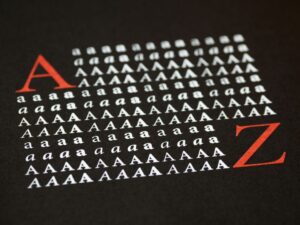**The Role of Web Design in Enhancing Brand Loyalty** is a crucial topic for businesses striving to create lasting connections with their customers. Have you ever wondered how a well-designed website can influence your brand’s reputation and customer retention? In today’s digital landscape, the aesthetics and functionality of your online presence can significantly impact how customers perceive and engage with your brand.
Effective web design goes beyond mere visuals; it fosters trust and encourages loyalty. A professional website, like those crafted by CYTICX, not only captivates visitors but also enhances user experience, making it easier for customers to navigate and interact with your brand. By integrating modern design trends and optimizing for search engines, businesses can create a compelling online identity that resonates with their target audience.
But the importance of web design doesn’t stop there. As industry expert Don Norman emphasizes, good design is about making things usable and enjoyable. So, how can you leverage web design to build brand loyalty? Join us as we explore the essential elements of web design that can elevate your brand and keep customers coming back for more.
Understanding Brand Loyalty
Brand loyalty refers to a customer’s commitment to repurchase or continue using a brand. This loyalty is crucial in today’s competitive marketplace. It fosters repeat business and creates a stable customer base. When consumers feel a strong connection to a brand, they are less likely to switch to competitors, even when faced with better options.
Psychological factors play a significant role in developing brand loyalty. Emotional connections, trust, and perceived value influence a customer’s decision-making process. For instance, when customers identify with a brand’s values, they are more inclined to remain loyal. Additionally, positive experiences with a brand enhance trust, making customers more likely to return.
Moreover, brand loyalty directly impacts customer retention and business profitability. Loyal customers tend to spend more over time, leading to increased revenue. They also act as brand advocates, promoting the brand through word-of-mouth. This organic marketing reduces acquisition costs and boosts overall profitability. To learn more about enhancing your brand’s presence, visit our about page or explore our marketing strategies.
The Basics of Web Design
Effective web design hinges on several key principles. Usability ensures that visitors can navigate your site effortlessly. Aesthetics play a crucial role, as visually appealing designs attract and retain users. Accessibility is equally important; it guarantees that all users, regardless of ability, can engage with your content.
In today’s mobile-first world, responsive design is essential. Websites must adapt seamlessly to various screen sizes. This adaptability enhances user experience and keeps visitors engaged. When users encounter a site that functions well on their devices, they are more likely to return.
Moreover, web design significantly impacts user experience (UX) and user interface (UI). A well-designed interface guides users intuitively through your site. Clear calls to action and organized layouts improve interaction. Consequently, a positive UX fosters brand loyalty, encouraging users to explore further.
To learn more about enhancing your brand’s online presence, visit our about page. For insights on effective marketing strategies, check out our marketing section. If you have questions, feel free to contact us.
The Connection Between Web Design and Brand Identity
Web design elements such as colors, typography, and imagery play a crucial role in reflecting brand identity. For instance, a vibrant color palette can evoke emotions and create a memorable impression. Similarly, typography choices convey personality and tone, reinforcing the brand’s message. Imagery, whether through photographs or graphics, helps tell the brand’s story visually.
Moreover, consistency across different platforms and devices is essential. A cohesive design ensures that users recognize the brand, regardless of where they encounter it. This uniformity builds trust and enhances user experience. For example, a brand that maintains the same color scheme and typography on its website and social media channels fosters familiarity.
Brands like Apple and Coca-Cola exemplify successful alignment of web design with brand identity. Apple’s minimalist design reflects its commitment to innovation and simplicity. In contrast, Coca-Cola’s vibrant colors and playful typography evoke feelings of joy and nostalgia. Such strategic design choices not only enhance brand loyalty but also create a lasting connection with consumers. For more insights on enhancing your brand, visit our about page or explore our marketing strategies.
Enhancing User Experience Through Web Design
Intuitive navigation and a well-structured layout significantly enhance user experience. When visitors can easily find what they seek, they are more likely to stay on the site. Clear menus and logical pathways guide users effortlessly. Moreover, fast loading times are crucial. Studies show that even a one-second delay can lead to increased bounce rates. Users expect instant access to information, and slow sites frustrate them. Consequently, optimizing your website for speed can dramatically improve user retention.
Engaging content plays a vital role in keeping users on your site longer. Use compelling headlines and concise paragraphs to capture attention. Incorporate visuals, such as images and videos, to break up text and maintain interest. Additionally, consider adding interactive elements like quizzes or polls. These features encourage users to engage more deeply with your content. For further insights on enhancing your brand’s online presence, explore our about page or check out our marketing strategies. Ultimately, a seamless user experience fosters brand loyalty and encourages repeat visits.
Building Trust and Credibility with Web Design
A professional web design plays a crucial role in establishing brand credibility. When users encounter a well-designed website, they perceive the brand as trustworthy and reliable. Conversely, a poorly designed site can raise doubts about the brand’s legitimacy. Incorporating security features, such as SSL certificates and clear privacy policies, significantly enhances user trust. These elements reassure visitors that their data is safe, fostering a sense of security.
Moreover, design elements like testimonials and reviews can effectively convey trustworthiness. Displaying positive feedback prominently on your site can influence potential customers’ perceptions. For instance, a dedicated section for testimonials can showcase satisfied clients, reinforcing your brand’s reliability. Additionally, using recognizable trust symbols, such as security badges, can further enhance credibility.
Incorporating these elements not only builds trust but also encourages user engagement. When visitors feel secure, they are more likely to explore your offerings. Ultimately, a thoughtful web design strategy can significantly impact brand loyalty and customer retention. For more insights on enhancing your online presence, check out our marketing resources.
The Impact of Visual Elements on Brand Loyalty
High-quality images and videos play a crucial role in web design. They capture attention and create a lasting impression. When users encounter stunning visuals, they are more likely to engage with the content. Furthermore, visual storytelling fosters emotional connections with the brand. By weaving narratives through images and videos, brands can resonate with their audience on a deeper level.
To enhance brand loyalty, consider incorporating infographics and other visual aids. These tools simplify complex information, making it more digestible. For instance, a well-designed infographic can convey key statistics and insights effectively. Additionally, using consistent visual themes reinforces brand identity. This consistency helps users recognize and remember the brand.
Moreover, ensure that all visual elements align with your brand message. Each image or video should reflect your values and mission. This alignment strengthens the overall impact of your web design. For more insights on enhancing your brand’s presence, check out our about page or explore our marketing strategies. Engaging visuals can significantly elevate your brand’s loyalty and recognition.
The Role of Call-to-Actions (CTAs) in Web Design
Call-to-actions (CTAs) play a crucial role in web design by guiding users toward desired actions. Strategically placed CTAs enhance user engagement and encourage visitors to explore further. When users encounter a well-designed CTA, they are more likely to click, leading to higher conversion rates. For instance, a brightly colored button with clear text can capture attention effectively.
Moreover, the placement of CTAs matters significantly. Positioning them above the fold ensures visibility without requiring users to scroll. Additionally, using action-oriented language, such as "Get Started" or "Join Now," creates a sense of urgency.
Effective CTAs often incorporate contrasting colors to stand out from the rest of the page. For example, a green button on a white background draws the eye and prompts action. Furthermore, including microcopy—short, persuasive text—can clarify the benefits of clicking.
To learn more about enhancing user experience, visit our about page. For insights on effective marketing strategies, check our marketing section. Finally, if you have questions, feel free to reach out through our contact page.
Analyzing User Behavior Through Web Design
Understanding user behavior is crucial for effective web design. Analytics tools provide valuable insights into how visitors interact with your site. By tracking metrics such as page views, bounce rates, and session duration, you can identify areas for improvement. This data-driven approach allows you to tailor your design to meet user needs, ultimately enhancing brand loyalty.
A/B testing plays a significant role in refining web design. By comparing two versions of a webpage, you can determine which design elements resonate more with users. This method not only improves user experience but also fosters a stronger connection to your brand. As a result, users are more likely to return and engage with your content.
Additionally, utilizing feedback tools can yield rich user insights. Surveys can capture direct opinions, while heatmaps reveal where users click most frequently. Implementing these tools helps you understand user preferences and behaviors. For more information on enhancing your website, visit our about page or explore our marketing strategies. Engaging with your audience through these methods will strengthen brand loyalty and improve overall user satisfaction.
Future Trends in Web Design and Brand Loyalty
As web design evolves, emerging trends significantly shape brand loyalty. Minimalism continues to gain traction, offering clean interfaces that enhance user experience. This simplicity allows brands to communicate their messages clearly, fostering a stronger connection with users. Additionally, dark mode has become increasingly popular. It not only reduces eye strain but also creates a modern aesthetic that appeals to tech-savvy consumers. Brands adopting this trend can stand out and resonate with their audience.
Moreover, AI integration is transforming how brands interact with users. Personalized experiences driven by AI can enhance engagement, making customers feel valued. As brands leverage these technologies, they can build deeper relationships with their audience.
Looking ahead, web design will likely embrace even more immersive experiences. Virtual and augmented reality may become commonplace, allowing brands to showcase their products in innovative ways. This evolution will undoubtedly impact brand loyalty, as consumers seek more engaging interactions. By staying ahead of these trends, brands can solidify their presence in the digital landscape. For more insights on how to enhance your brand’s online presence, visit our about page or explore our marketing strategies.
Frequently Asked Questions (FAQs)
Web design significantly influences customer retention. A well-structured website fosters a positive user experience, encouraging visitors to return. Brands can enhance loyalty by redesigning their sites to reflect their values and mission. Incorporating intuitive navigation and appealing visuals creates an inviting atmosphere. Moreover, essential web design elements, such as color schemes and typography, strengthen brand identity. These components help customers recognize and connect with the brand.
Mobile optimization plays a crucial role in maintaining brand loyalty. As more users access websites via mobile devices, a responsive design ensures a seamless experience. This adaptability increases user satisfaction, leading to higher retention rates. Additionally, content is vital in web design. Engaging, relevant content keeps users informed and entertained, reinforcing their connection to the brand.
To measure the effectiveness of web design on customer loyalty, brands can analyze metrics like bounce rates and time spent on the site. Tools like Google Analytics provide valuable insights. By continuously refining their approach, brands can enhance their web presence and foster lasting relationships with customers. For more information on effective strategies, visit our about page or explore our marketing resources.




